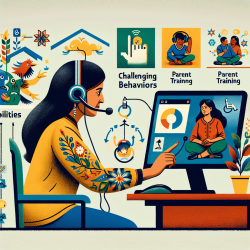Introduction
In the realm of speech-language pathology, the focus is often on individual interventions to enhance communication skills. However, the recent research article, From Program to Policy: Expanding the Role of Community Coalitions, offers a compelling case for expanding our perspective to include community-wide approaches that can significantly impact health outcomes. This blog explores how practitioners can leverage these insights to improve their practice and outcomes for children.
The Power of Community Coalitions
Community coalitions have emerged as powerful agents of change, particularly in addressing chronic health issues like diabetes, which disproportionately affect underserved communities. The research highlights how coalitions transitioned from programmatic interventions to policy advocacy, resulting in significant environmental and policy changes. These changes not only improved health behaviors but also fostered a sense of community ownership and empowerment.
Key Takeaways for Practitioners
Practitioners in speech-language pathology can draw several lessons from this research:
- Collaboration is Key: Building partnerships with community organizations can amplify the impact of individual interventions. By working together, practitioners can address broader social determinants of health that affect communication development.
- Policy Advocacy: Engaging in policy advocacy can lead to systemic changes that support better health outcomes. For instance, advocating for policies that promote early childhood education and access to speech therapy services can have long-term benefits.
- Data-Driven Approaches: Utilizing data to inform interventions and policy decisions ensures that efforts are targeted and effective. Practitioners should leverage data to advocate for necessary resources and support within their communities.
Encouraging Further Research
The transition from program to policy is not without challenges. Practitioners are encouraged to engage in further research to explore how these strategies can be adapted to different contexts and populations. Understanding the nuances of policy advocacy and coalition building can enhance the effectiveness of interventions and lead to sustainable health improvements.
Conclusion
By embracing the principles outlined in the research, practitioners can expand their impact beyond individual therapy sessions to influence community health outcomes positively. The journey from program to policy requires dedication and collaboration, but the potential benefits for children and communities are immense.
To read the original research paper, please follow this link: From Program to Policy: Expanding the Role of Community Coalitions.










